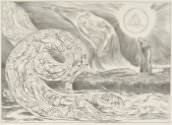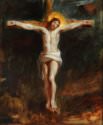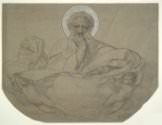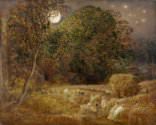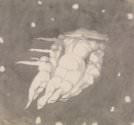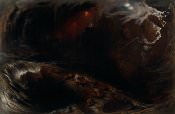Jerusalem
Jerusalem
William Blake insisted that Jerusalem, his final prophetic book, was divinely inspired. Of the five copies he printed in his lifetime, only the edition now at the Yale Center for British Art was colored. Blake described his narrative as a “Sublime Allegory,” which he divided into four chapters that correspond to spiritual stages of human history, addressed “To the Public,” “To the Jews,” “To the Deists,” and “To the Christians.” The text has been linked to biblical precedents, particularly the Book of Revelation, as it begins after a universal fall and ends with redemption. However, Jerusalem is not a straightforward expression of Christian devotion. The illuminated text offers a critique of organized religion at a moment of spiritual uncertainty across Europe. Blake called for radical religious reform by liberating faith from the corruption and dogmatism of institutional churches and reimagining it in modern terms.




